Sketches
Not Actually a Banknote?
Pam wrote an article which appeared in the IBNS journal. Volume 49, Number 3, September 2010.
No 7 & 21 new to list
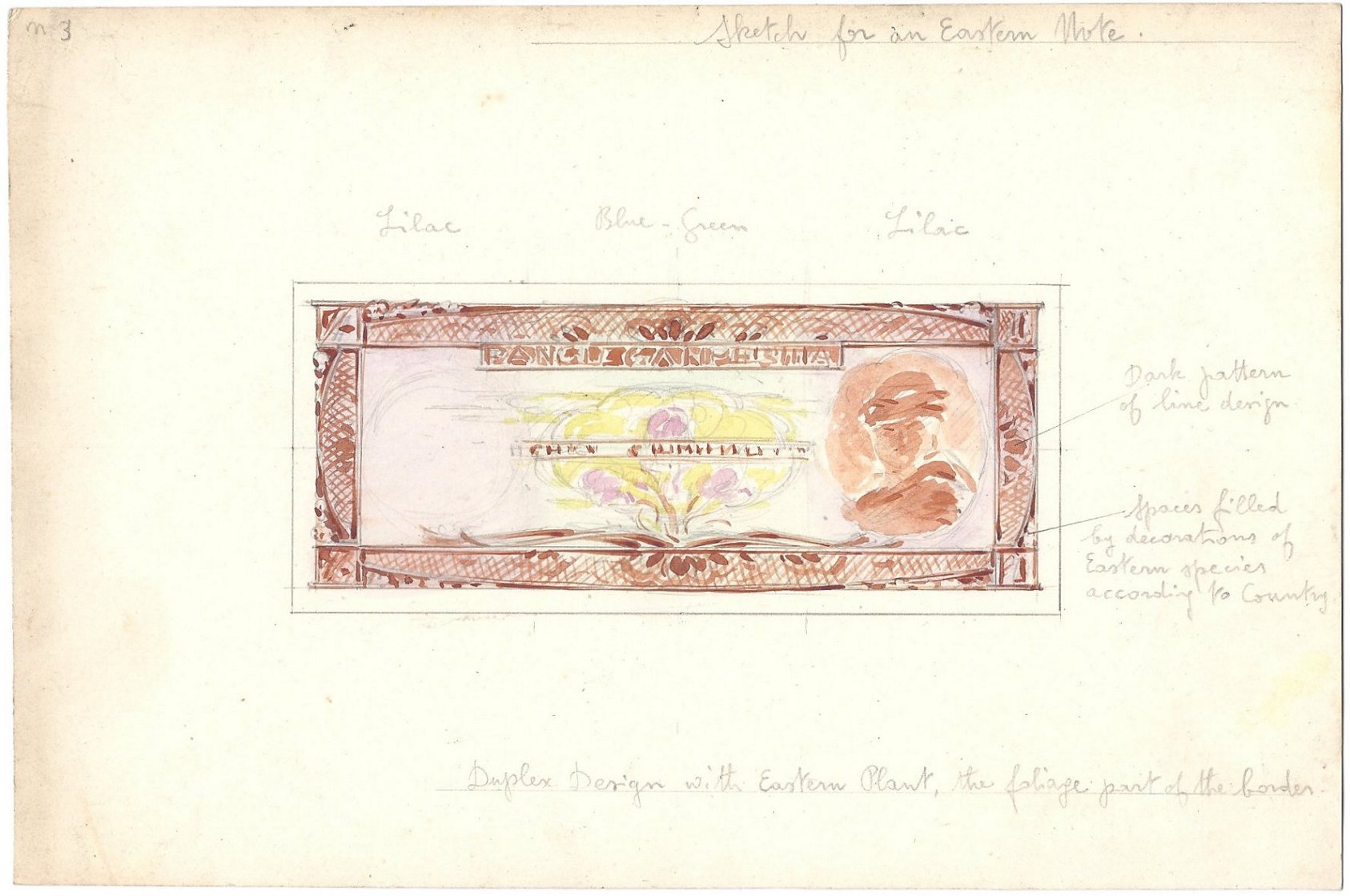
3 Sketch for an Eastern Note
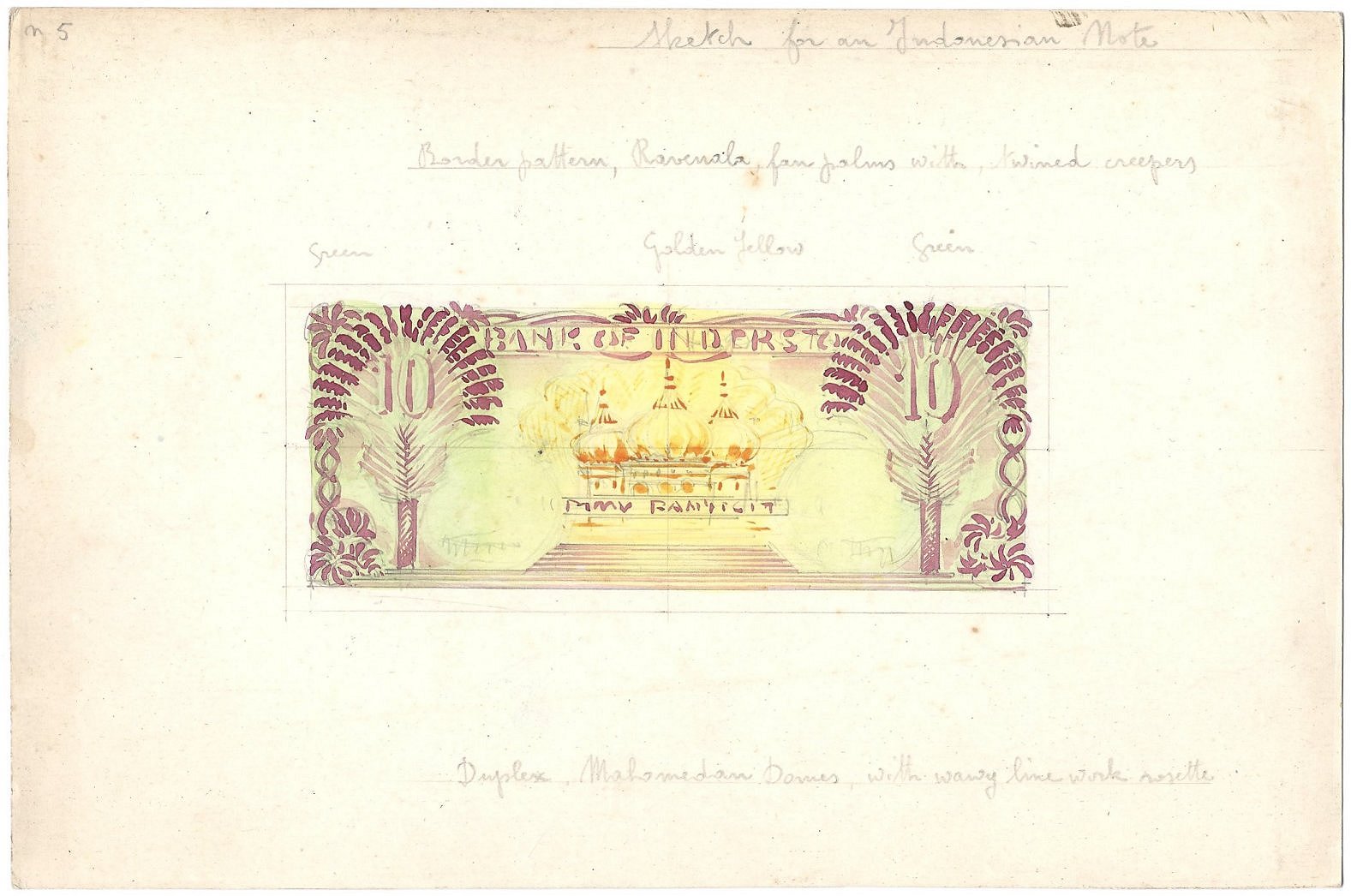
5 Sketch for an Indonesian Note
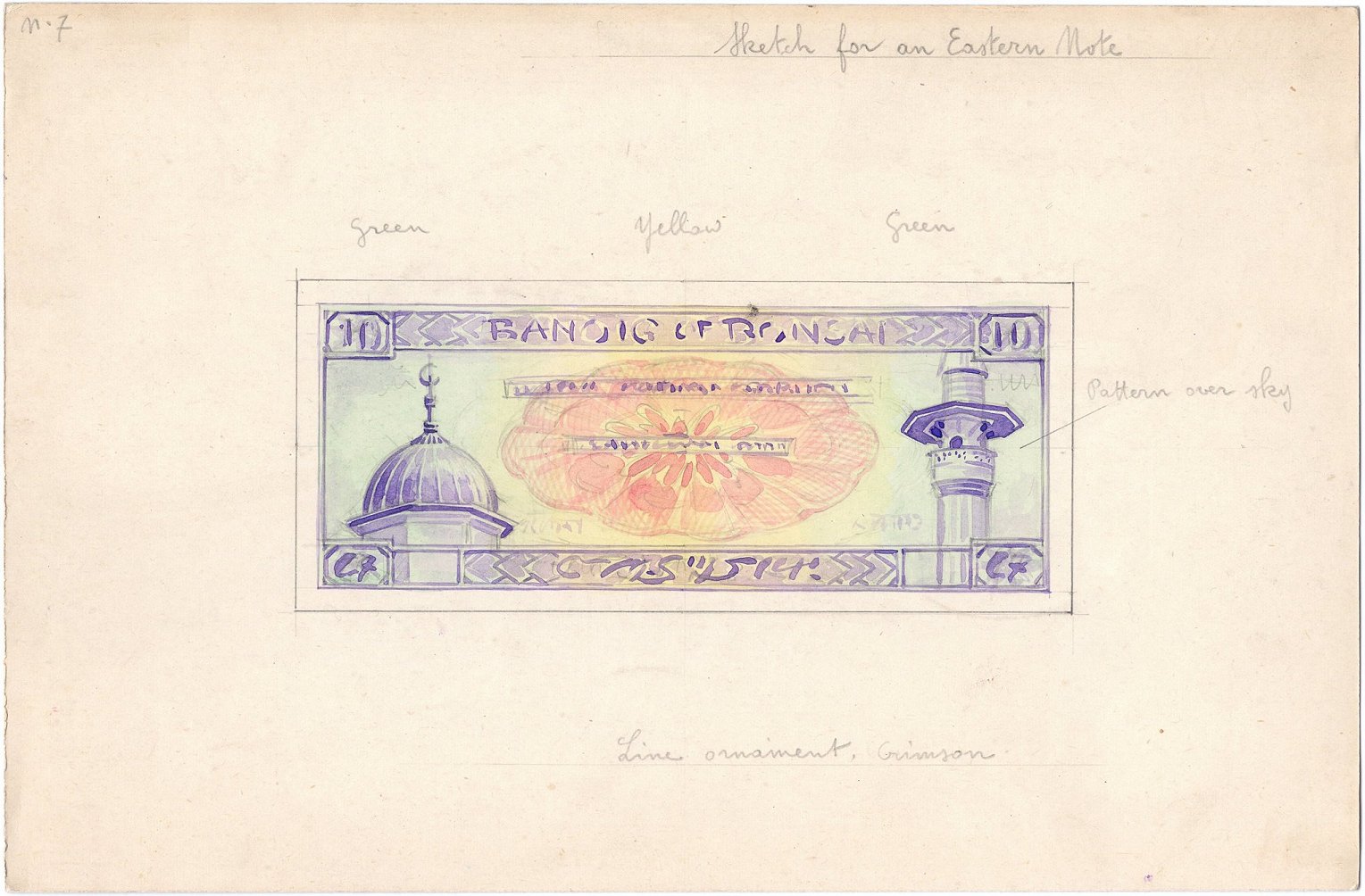
7 Sketch for an Eastern Note (new to list)
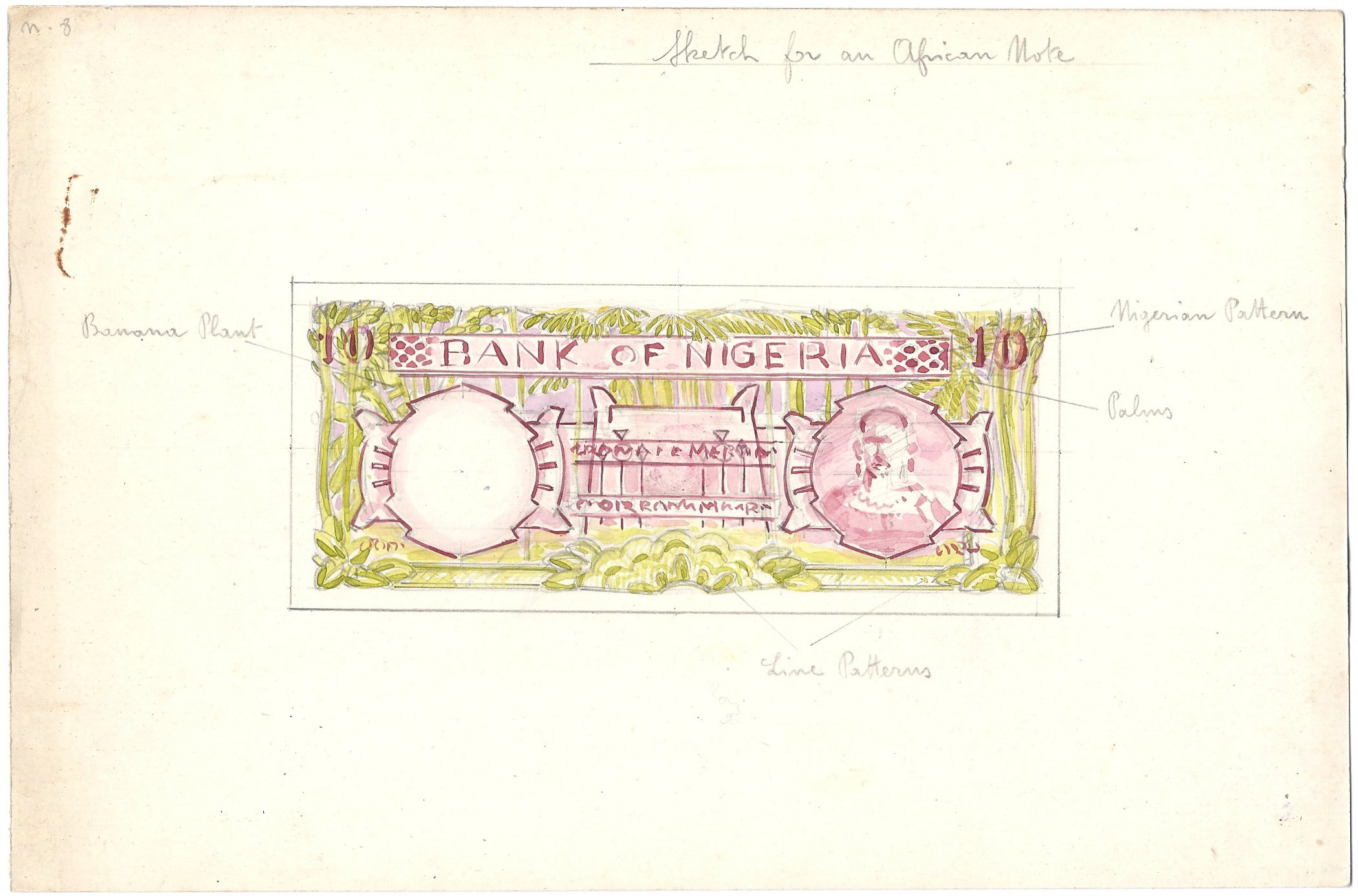
8 Sketch for an African Note
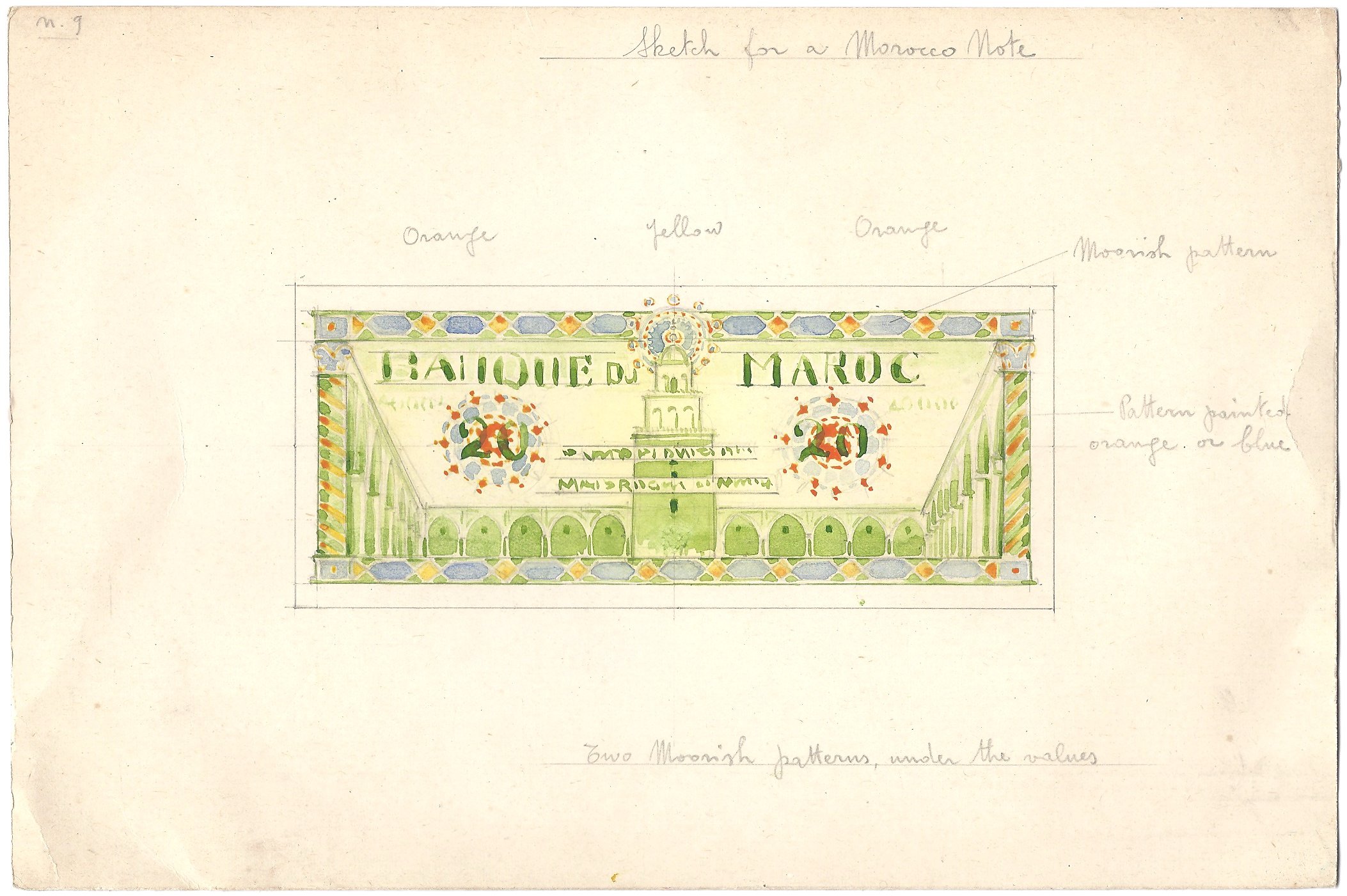
9 Sketch for a Morrocan Note
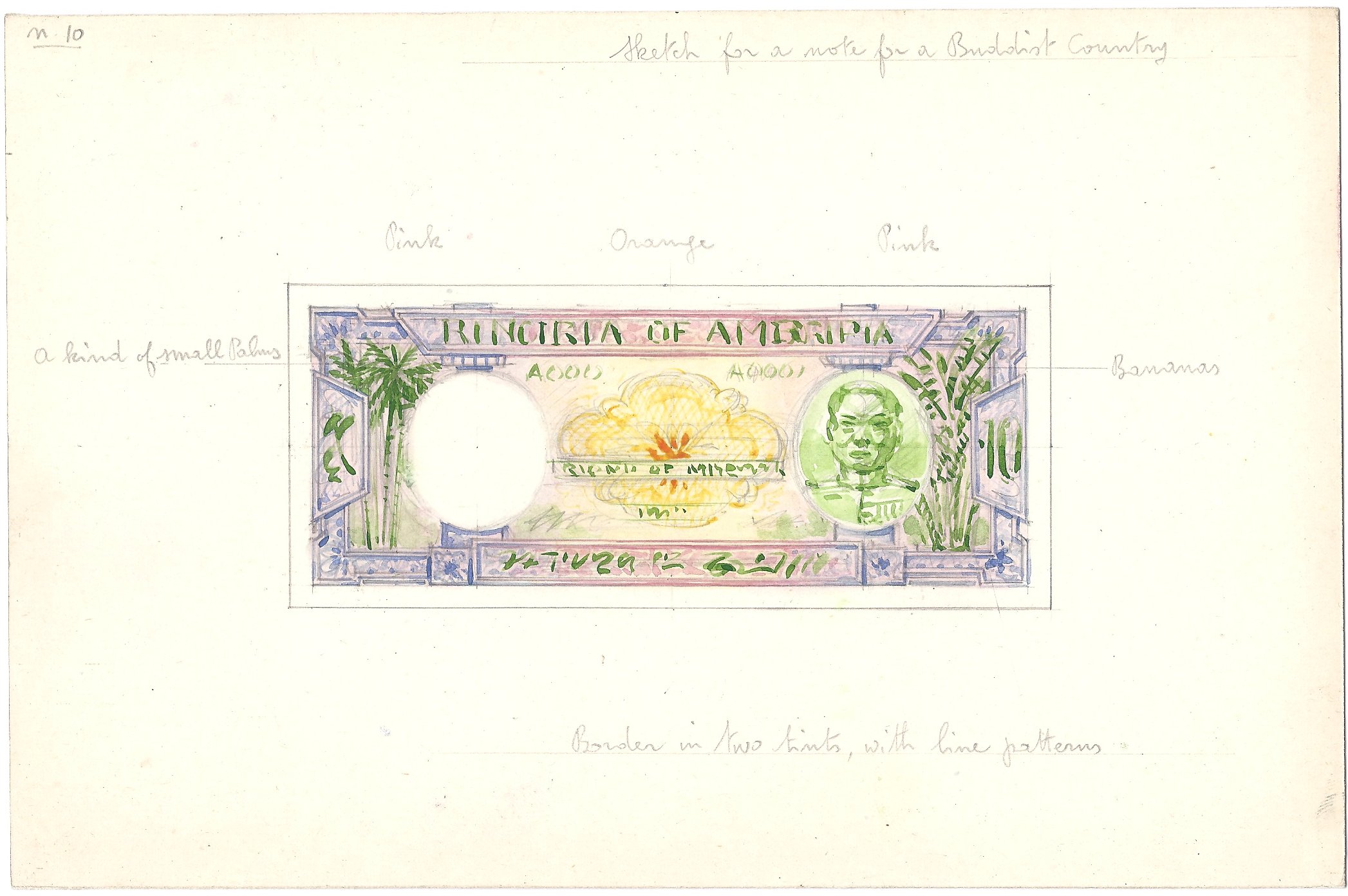
10 Sketch for a Buddhist country
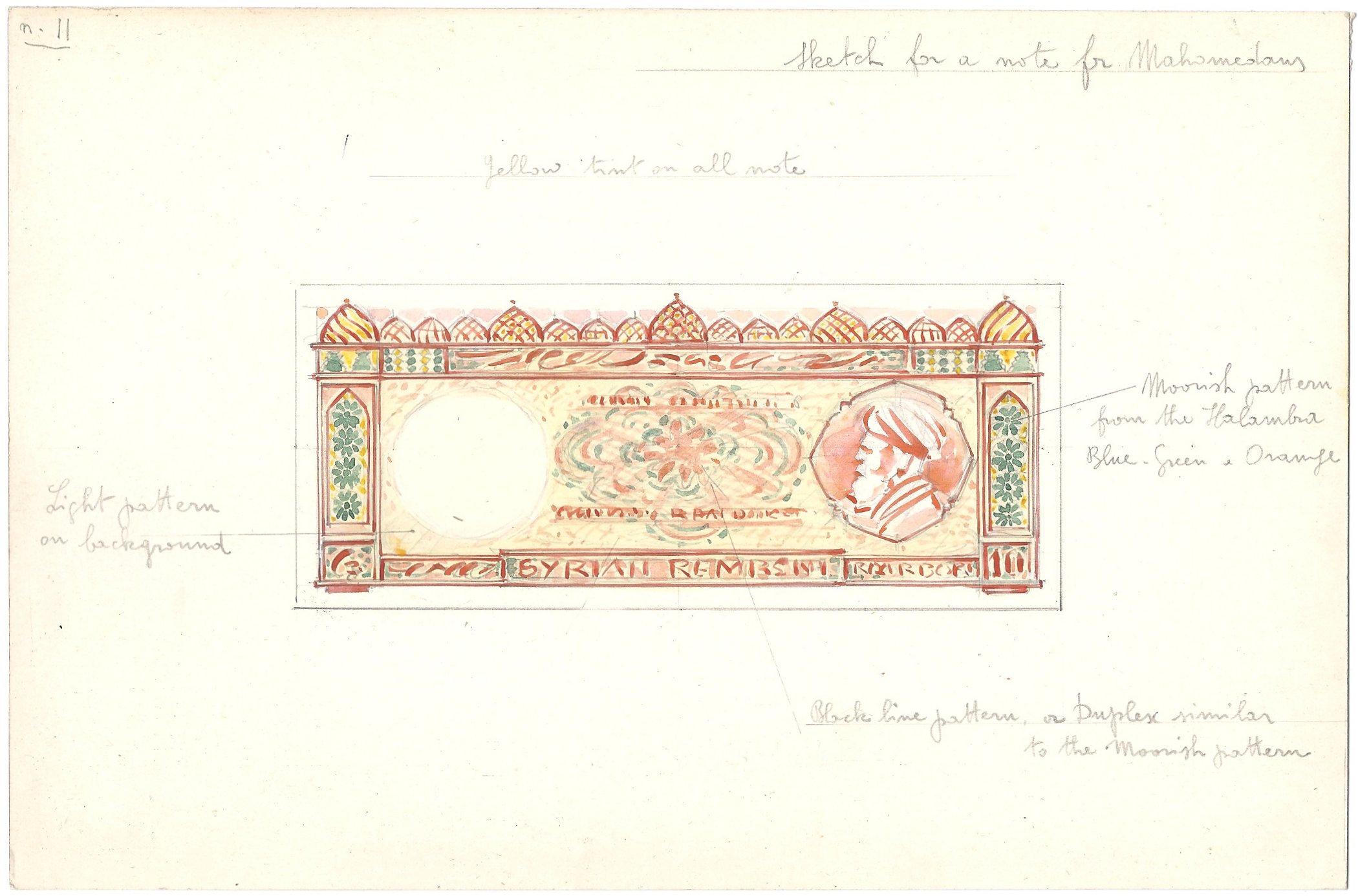
11 Sketch for a Note for Mohommedans
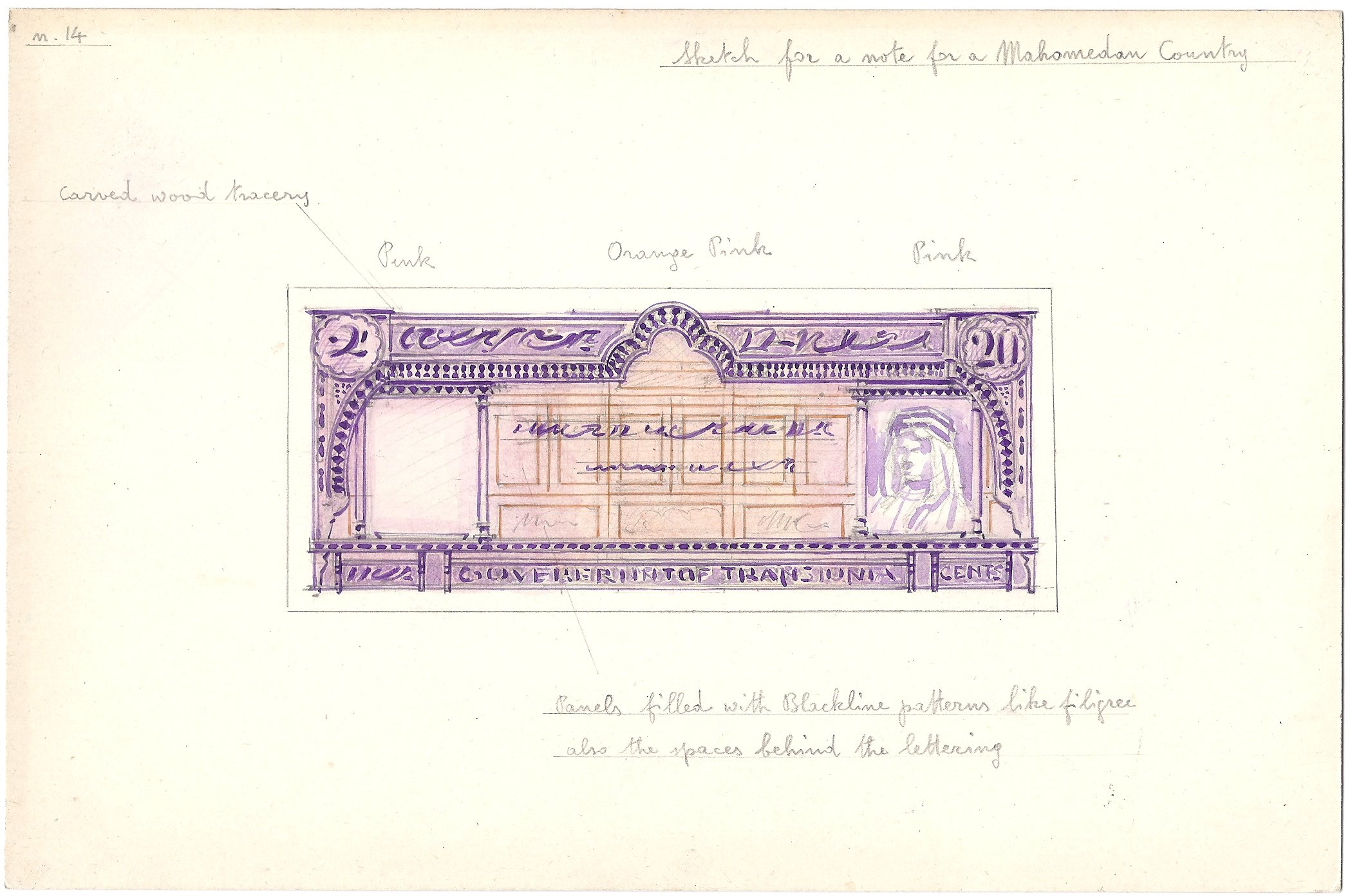
14 Sketch for a Mohammedan country
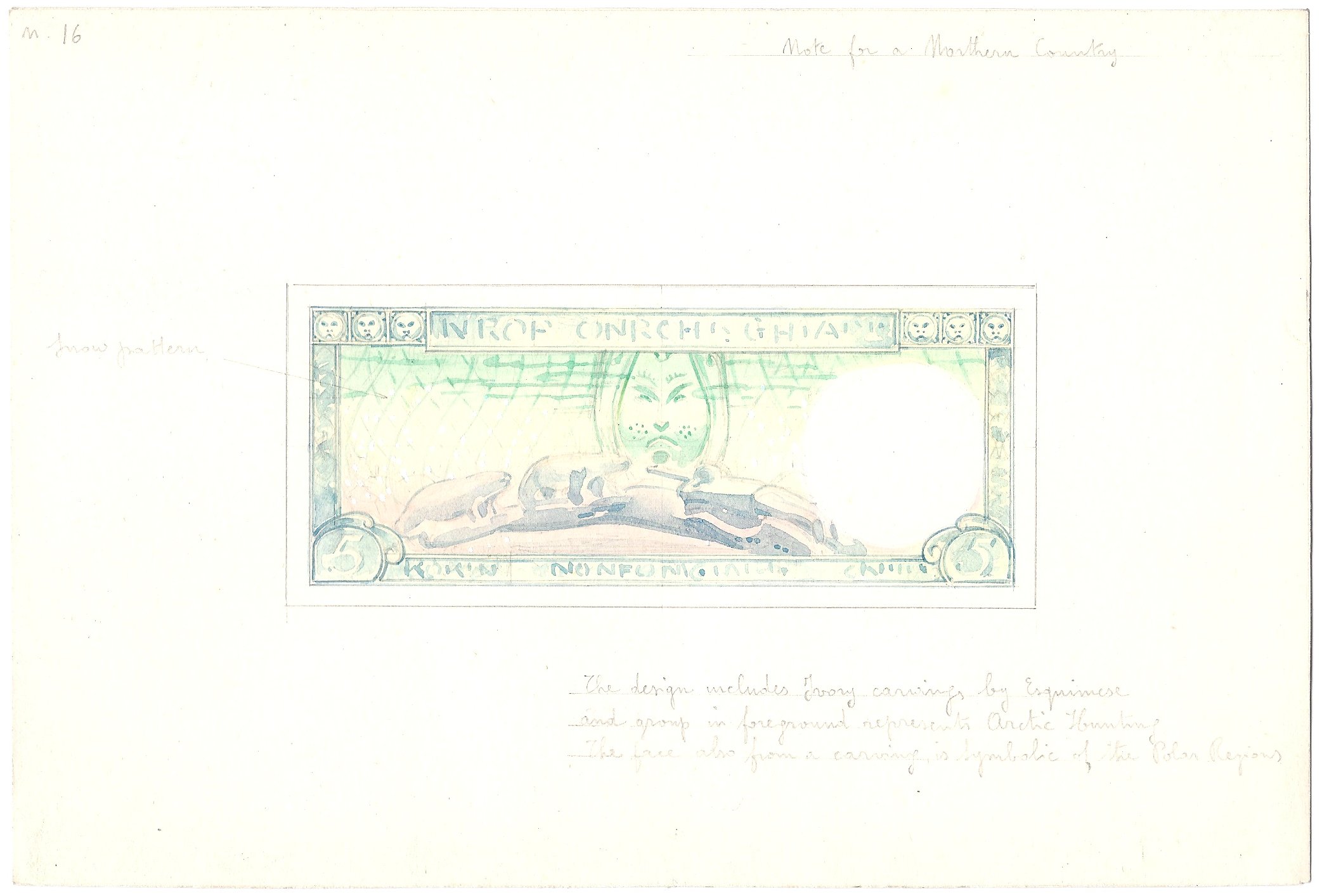
16 Sketch for a Northern country
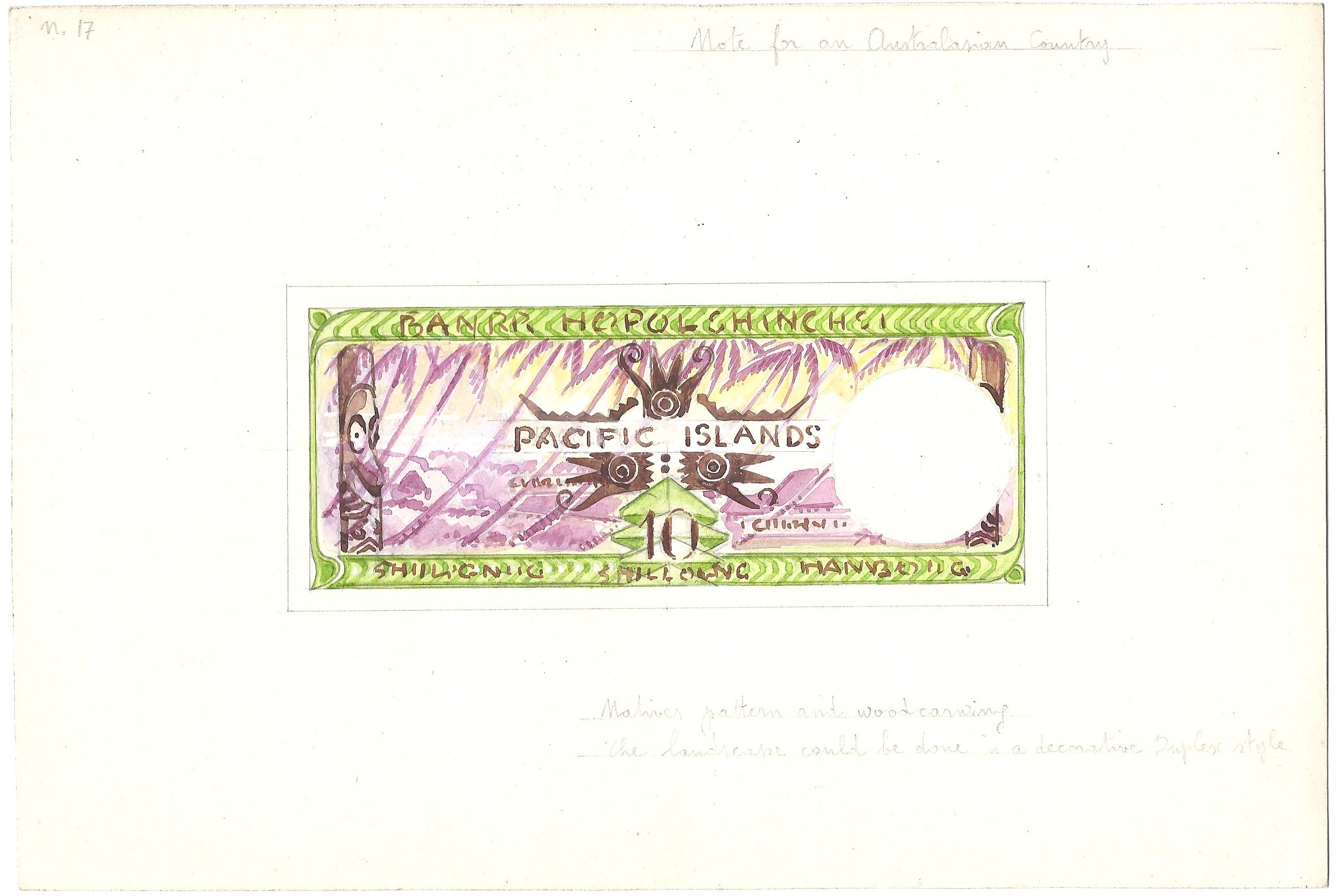
17 Sketch for an Australasian country
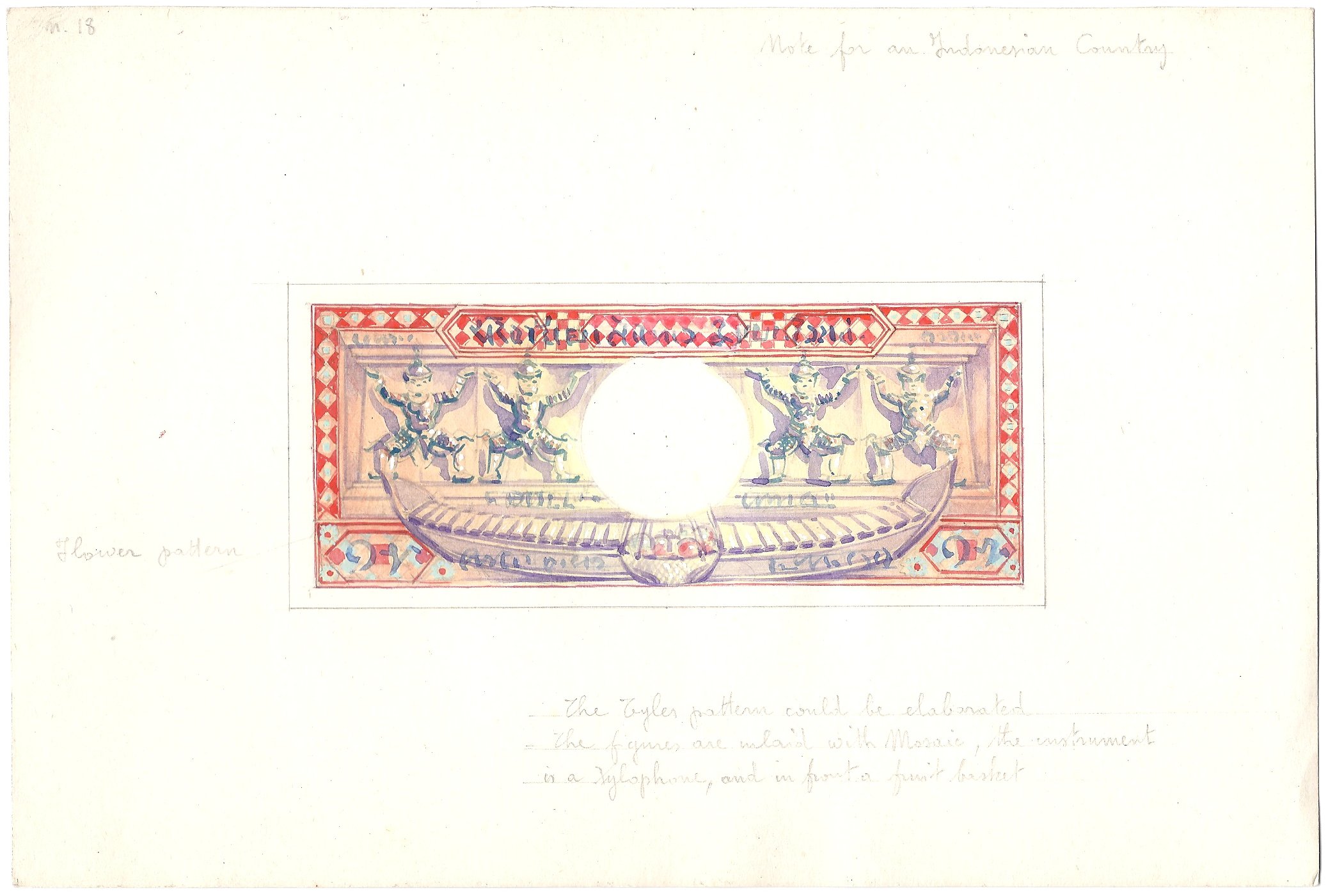
18 Sketch for an Indonesian country
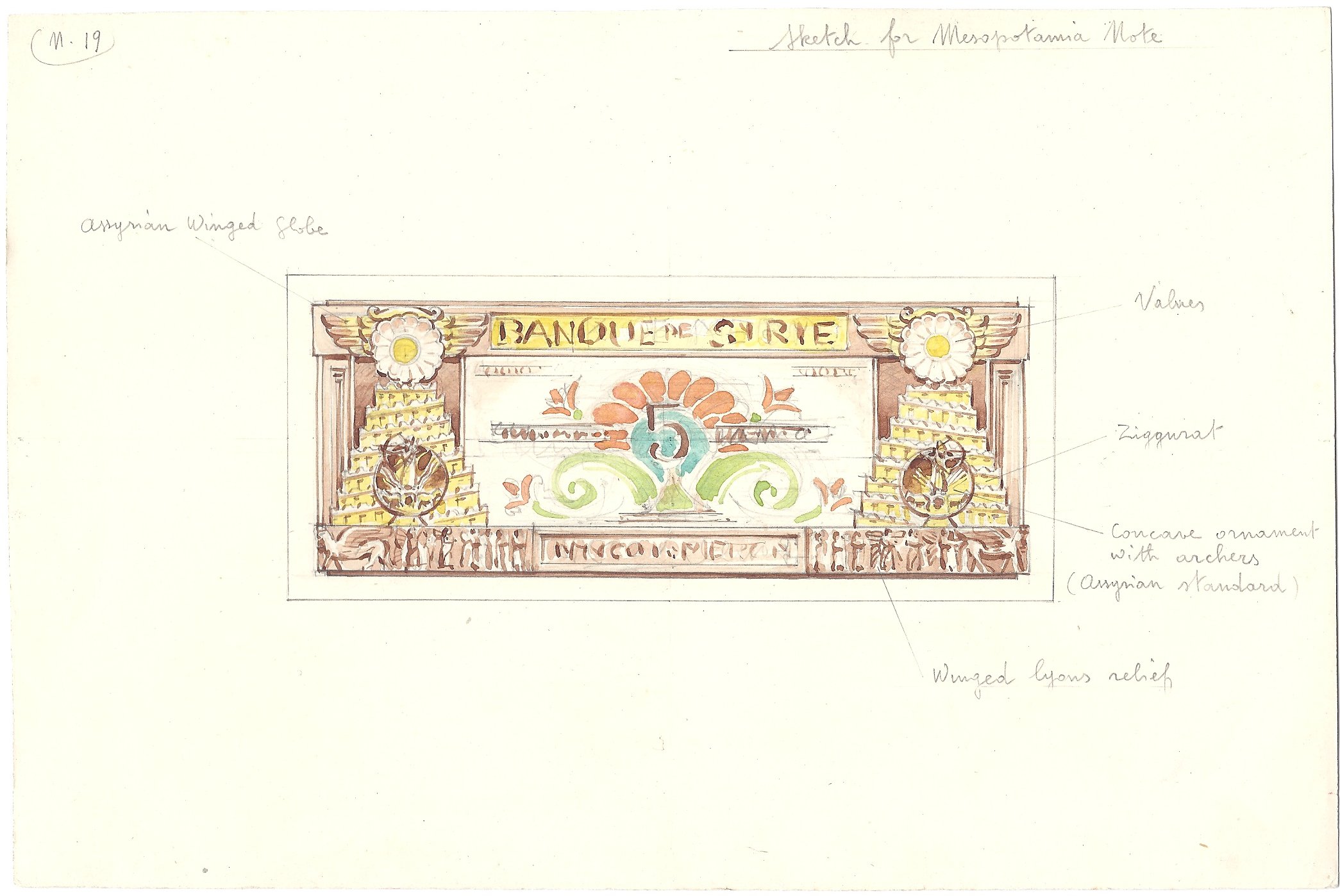
19 Sketch for a Mesopotamia Note
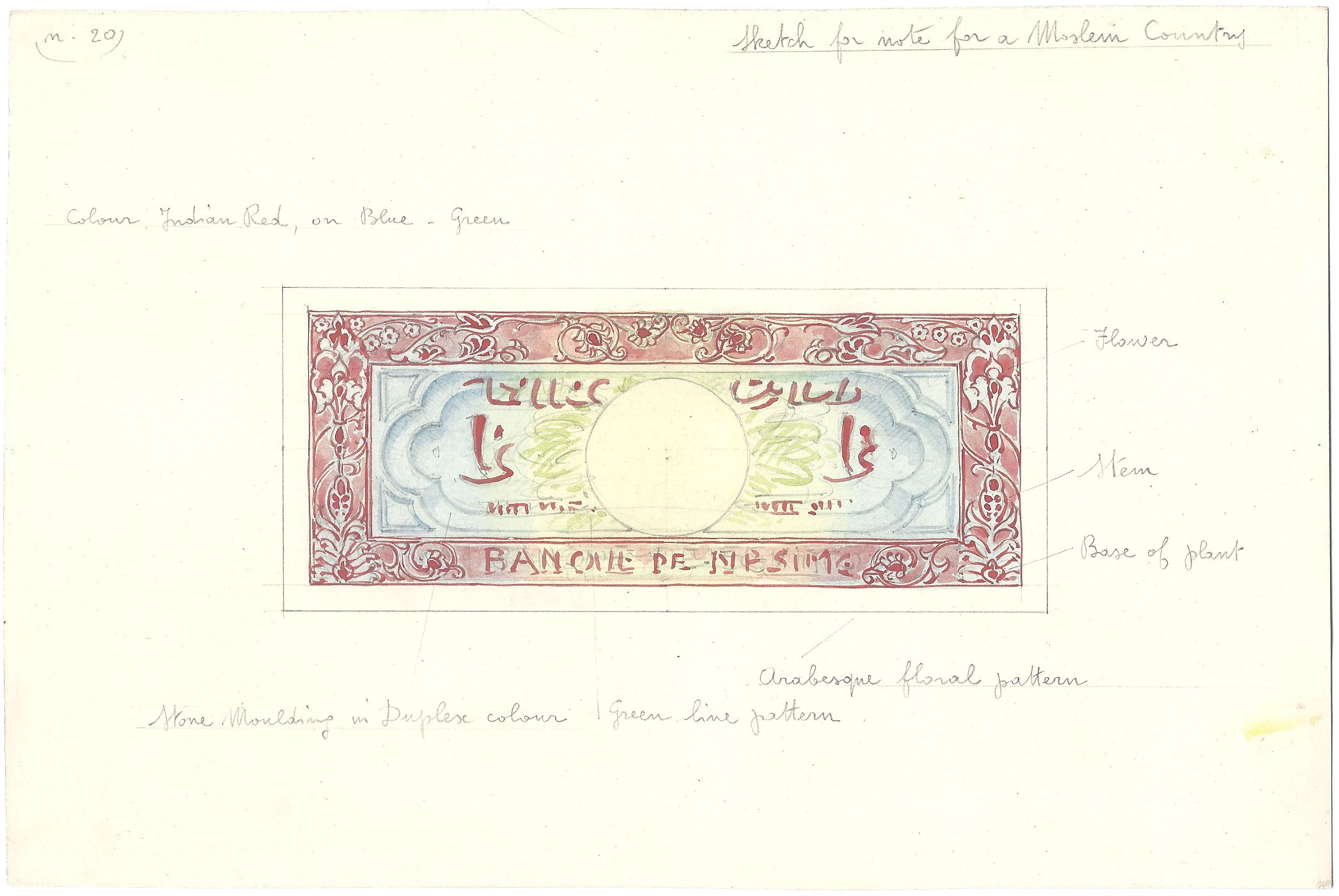
20 Sketch for a Muslim country
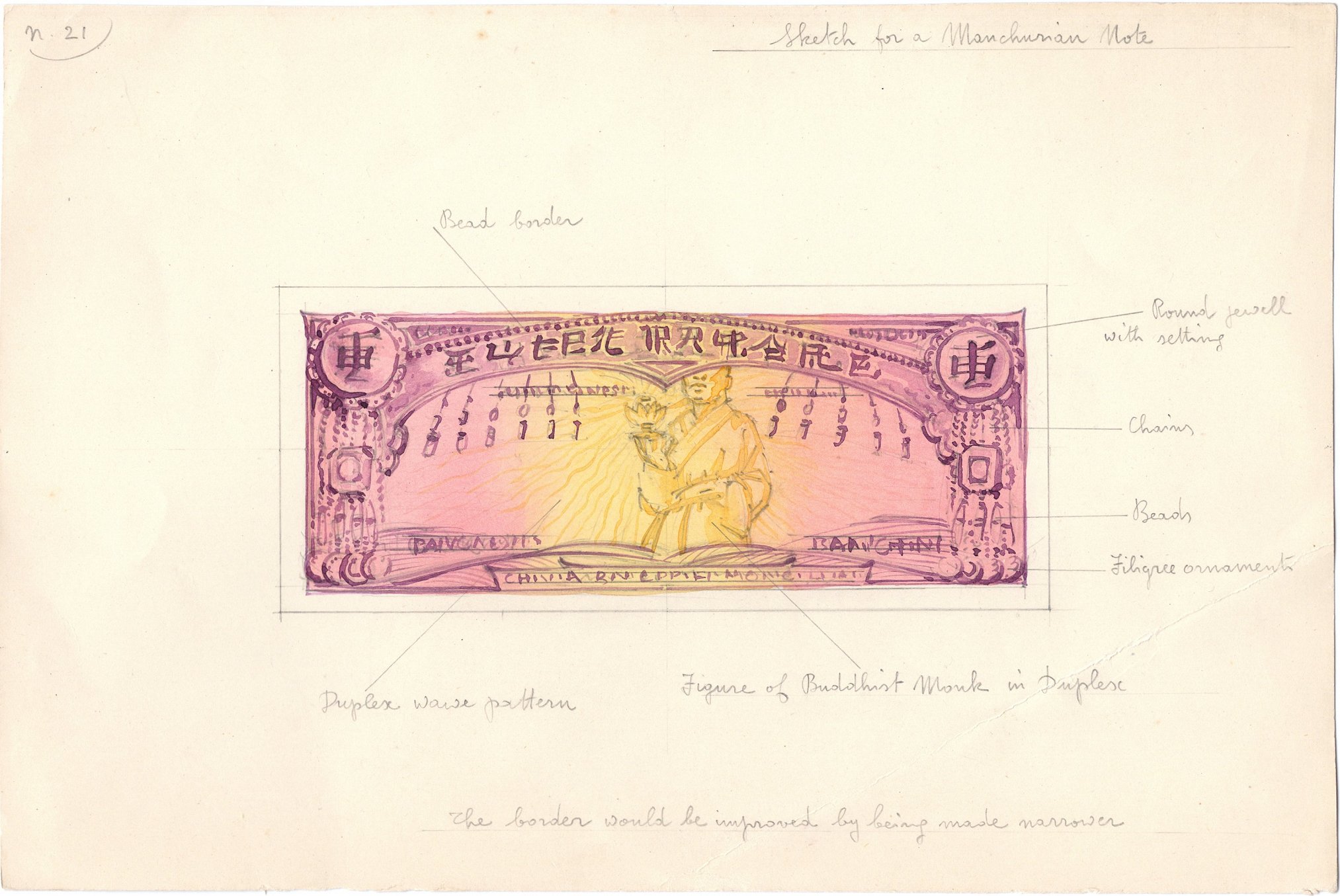
21 Sketch for a Manchurian Note (new to list)
Not Actually a Banknote?
Notaphilists seem to collect according to strict rules. The banknotes have to conform to specific wants: Reference, Country, Denomination, Issued Banknote, Grade, Price…etc. In other words it ‘Ticks all the boxes’.
The banknote with all the ticks has gone through a rigorous process to end up as a final circulating banknote and subsequently to end up with a collector. The process would have consisted of: Idea, Sketch, Artwork, Pasteup, Engraving, Trials, Proofs, and so on, all executed by skilled craftsmen. In the future, maybe it’s already here, CAD (Computer Aided Design) will take all the earlier processes away, removing most of the human element from production. Leaving the approval of a final design, printing and ultimately placement of the banknote into circulation.
So what if a banknote does not tick any the boxes?
At some point an artist was given a brief to design a set of banknotes by world region not by country. Various ideas would have been worked up with nonsensical wording to fill the headings. The preparation for these designs would have taken careful consideration of the minutest detail, being careful not to offend anyone politically or religiously in anyway. Can anyone prove these designs led to a final issued banknote? Does it matter? Not ticking all the boxes, having an open mind, being aware that collecting banknotes can be extended to beyond a catalogue reference number. All or any of these enhance our unique hobby.
The twelve surviving preliminary sketches recorded in this article are from a De La Rue artist’s effects. All are undated but must have been created in the late 1950s. Other related artwork obtained at the time relates to this era. Each sketch would have taken a skilled artist two or three days to complete. I suspect they were commissioned by the Design Department at De La Rue, possibly as speculative work to fill down time in slack periods or work for the ‘stock books’. The ‘stock books’ would have been full of artwork, complete and part designs, to show prospective clients who could choose elements to be worked up into preliminary pasteups. A high percentage of the De La Rue ‘stock books’ were disposed of in the late 1990s. One reason for the disposal being the move in 1999 from Basingstoke, Hampshire (De La Rue H.Q.) to Overton, Hampshire (Portals H.Q.), there being less storage space for the archive at Overton. De La Rue had obtained Portals and asset stripped the company, selling off the Manor House, tithe cottages and river - the heritage of Henri de Portal’s and his ‘family’. Thus creating a bad working environment for the incoming workforce. Ironically, the Design Department moved back to Basingstoke in 2009.
Accepted pasteups pass to a General Engraver who works on the basic banknote features. Then a succession of artists would work on their specialist area: Vignette Engraver, Lettering Engraver, Plant Engraver, Machine Engine Turning for borders and backgrounds and the most important of all, the Portrait Engraver.
All sketches are on thin card 263mm x 174mm, have numerous annotations relating to native patterns used, colours, border designs, heading text and plants and artefacts from the region depicted. The sketches themselves are 150mm x 65mm.
Thanks must go to retired De La Rue staff for their input.
Pam West IBNS Life Member No 79
No Main Title on Preliminary Sketch Text on Note
3 Sketch for an Eastern note Note Pang---?
5 Sketch for an Indonesian note Bank of Indersto
7 Sketch for an Eastern note (new to list)
8 Sketch for an African note Bank of Nigeria
9 Sketch for a Morrocan note Banque du Maroc
10 Sketch for a Buddhist country Rinciria of Amripia
11 Sketch for Mohommedan country Syrian Remrsmi
14 Sketch for a Mohammedan country Government of Transionia
16 Sketch or a Northern country Nroponrch Ghian?
17 Sketch for an Australasian country Pacific Islands
18 Sketch for an Indonesian country Text illegible
19 Sketch for a Mesopotamia note Banque de Syrie
20 Sketch for a Muslim country Banque de Mpsime
21 Sketch for a Manchurian Note (new to list)
Three of the sketches have annotations on the reverse:
3 This border will be alright - do the duplex separately. *
5 Do the border only - This design is very good.
8 This is alright - please make a finished design -
* Duplex = Two working pattern in Litho
